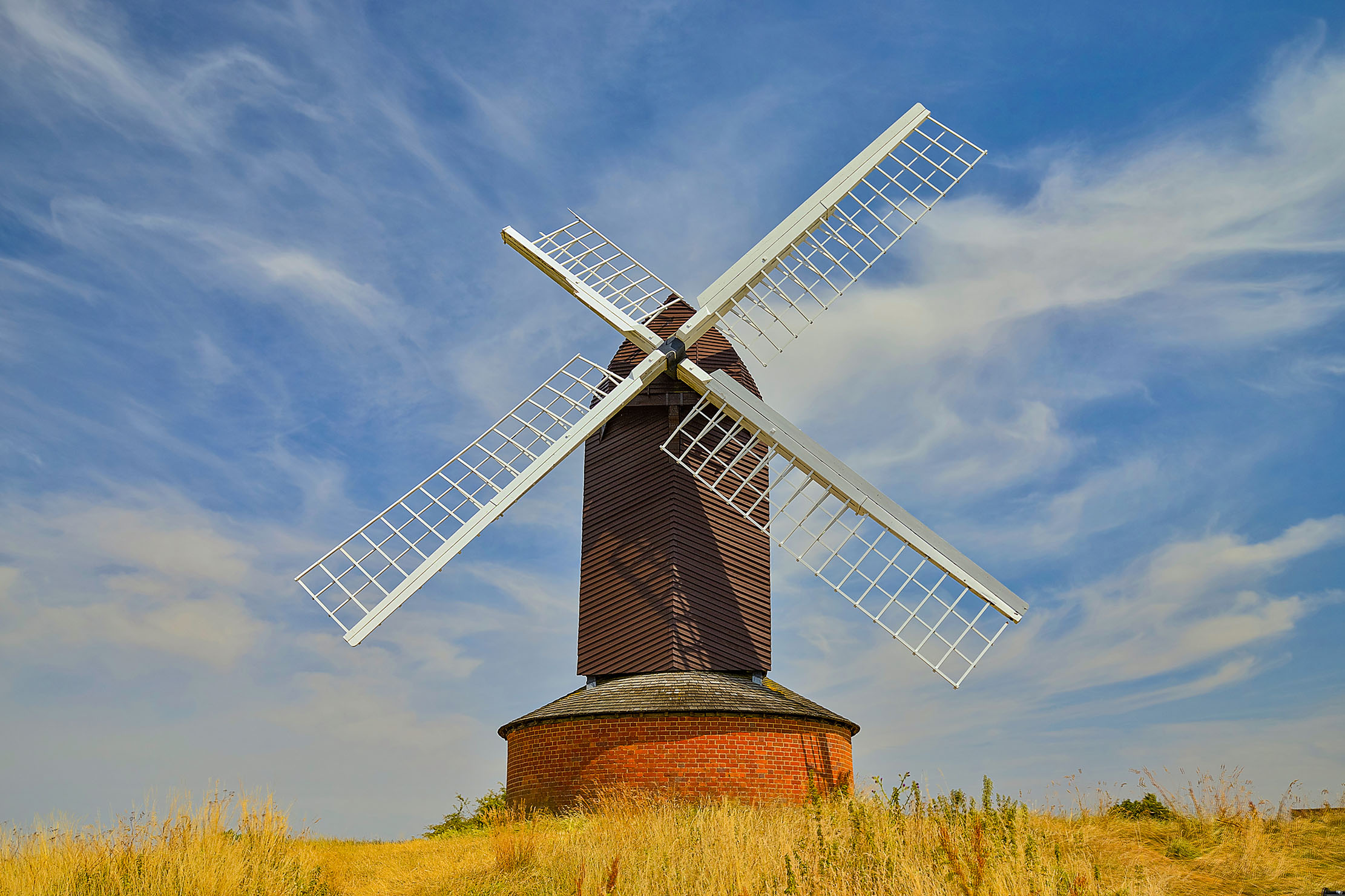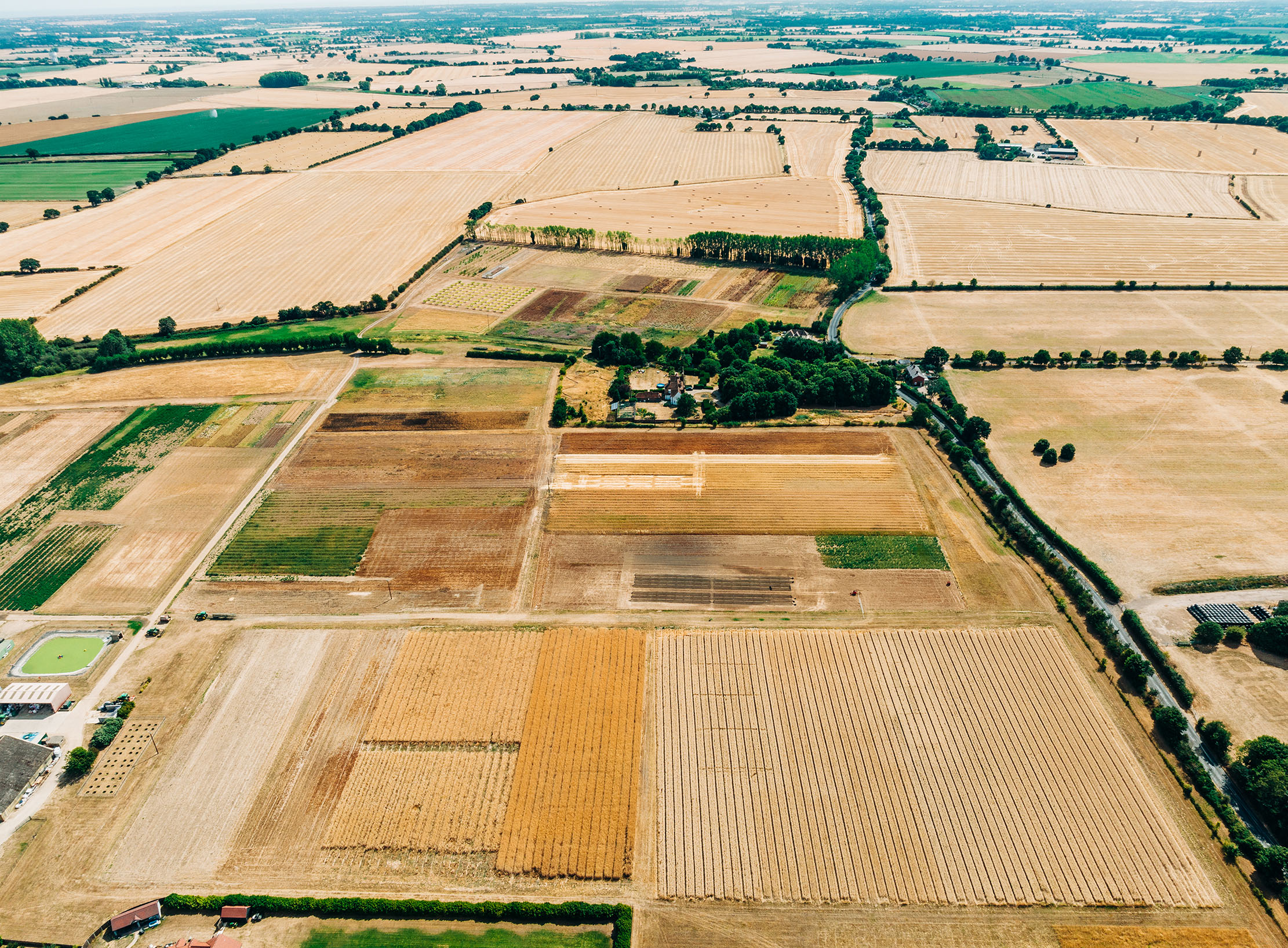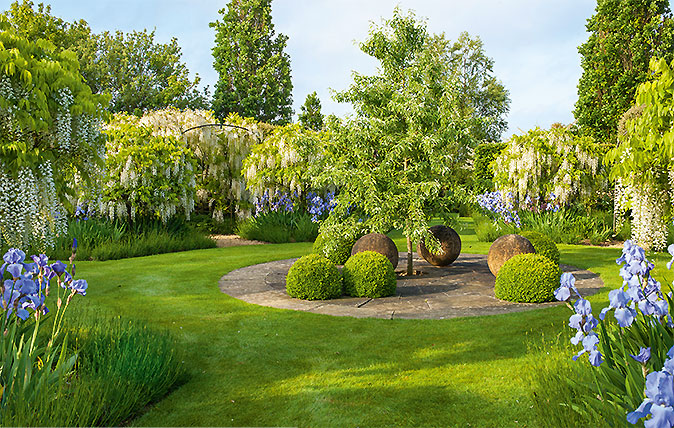Nature's winners and losers of the summer of 2022
Blazing heat and — belatedly — thundering rains caused havoc with Nature this summer, but there are always those who thrive and those who struggle in unusual times. Julie Harding takes a look at who came off best in the past few turbulent months.


Good summer for
- Sunbathing reptiles
- English winemakers
- Birds from hotter climes
- Blue butterflies
- Producers of weird-shaped vegetables
- Goat farmers
Bad summer for
- Fish
- Fishermen
- Sea swimmers and surfers
- Chalkstream ecosystems
- Autumn foragers, due to early fruiting
- Vegetable growers
- Livestock farmers
- Maize
- Early-sowing crops
- Badgers and hedgehogs
- Common garden birds
- Aquatic insects, such as dragonflies
- Ants
The summer of 2022 will linger in the memory for its uninterrupted cobalt-sky days, blistering sunshine, soaring temperatures (40.3˚C was recorded for the first time ever in the UK on July 19) and a dearth of rain. Parallels have already been drawn with the shimmering summer of 1976, when weeks of hot, dry weather drained the colour from Britain’s usually verdant countryside, leaving great swathes a uniform dull beige. Parched soil became criss-crossed by cracks. Forests caught fire. Rivers ran dry.
Forty-six years later and the scenario is not dissimilar. According to the National Fire Chiefs Council, the summer of 2022 brought a 200% increase in wildfires from last year. A drought has been declared in nine of England’s 14 regions by the Environment Agency (EA) and millions of householders are enduring hosepipe bans. Following the driest July for almost 90 years, 13 rivers in England have been declared lower than ever before.
To compound this troubling picture, the longed-for rains when they came were so drenching that they overwhelmed systems, in part because the rock-hard ground couldn’t absorb the excess water. Companies consequently discharged sewage into the sea, leading to the unwelcome moniker ‘summer of sewage’, as it was dubbed by our columnist Agromenes.
Fishermen have also been lamenting the state of Britain’s waterways. ‘The Thames has dried up five miles from its source for the first time in living memory,’ points out Martin Salter of the Angling Trust. ‘Other small tributaries are now completely dry and the EA is conducting regular fish rescues. With the water table dropping and levels in lakes and ponds receding, many clubs have halted fishing.
‘The only positive news for angling is that, in hot weather, fish often spawn more than once and fry survival is enhanced by a lack of summer floods,’ adds Mr Salter. ‘However, this is often cancelled out by increases in pollution into lower volumes of water causing more than the usual damage.’
Exquisite houses, the beauty of Nature, and how to get the most from your life, straight to your inbox.
The situation has been particularly challenging for Britain’s farmers, for whom the searing temperatures have not only prompted crop and stubble fires, as the NFU reports, but also maize-crop failures (maize is famously drought tolerant) and pressure on early-sown 2022–23 crops, such as oilseed rape. East Anglia’s livestock farmers have been left reeling from no meaningful rain for months, forced to feed cattle from rapidly depleting forage stocks, as have dairy farmers there and elsewhere who have also seen negligible grass growth prompt plummeting milk volumes. Sheep farmers have experienced failed winter cover/fodder crops. Poultry farmers are bracing themselves for feed-price hikes if the prolonged dry spell affects cereal yields.
Britain’s organic farmers have been under pressure, too, but their methods, such as the extensive use of complex herbal leys and heritage crop varieties, don’t tend to play into the hands of a drought quite so dramatically. However, an organic system has provided no cushion for vegetable growers. ‘They have really suffered,’ says Jerry Alford, senior farming advisor for the Soil Association. ‘With ponds or rivers low, they aren’t irrigating and are having to plant into dry ground. Their crops aren’t growing to “perfect” supermarket specifications.’

On a smaller scale, Britain’s insect populations are facing greatly reduced food sources. ‘Initially, the hot spell was a bonus for nectar and pollen gatherers as flowers bloomed abundantly, but a few months of flowers came and went in weeks, leading to potential starvation,’ says Paul Hetherington of Buglife, who points out that slugs and snails have gone into a winter-like inactive phase; ground nesters such as ants have found it hard to establish new colonies in the concrete soil and drying water sources have proved fatal for aquatic larvae such as mayflies and stoneflies.
Mike Waite, Living Landscapes director at the Surrey Wildlife Trust, also points out the destabilising effects for many wild species when the seasons’ rhythms are interrupted. ‘For example, drier grasslands could benefit several of the blue butterflies [such as the reintroduced large blue, which has had its best summer in 150 years], as fungal attack on early life stages will be reduced, but this could have a knock-on effect later in the year if nectar and caterpillar food-plant sources run out because the vegetation has matured too early.’
Badgers, he adds, are struggling because the earthworm, one of their staple foods, has gone deeper underground to find moisture. Some native birds, too, including the robin, song thrush and blackbird, are afflicted because they can’t access the earthworm either. ‘The situation for birds is complex,’ observes Tom Stewart of the British Trust for Ornithology, ‘but, in a nutshell, new arrivals such as the European bee-eater and the black winged stilt, pushed northwards by the extreme drought in southern Europe, have found Britain’s warmth to their liking. The likes of swallows and swifts may have fared well because there have been more airborne insects.’ Reptiles have loved the warm days as well.

Ultimately, this blazing summer hasn’t been an unmitigated disaster for everyone. Gareth Dockerty of BASC says of grouse shooting: ‘The summer hasn’t had a hugely negative impact on grouse or ground-nesting birds because the spring weather, when the chicks were younger and more vulnerable, was better this year than for the past few years.’
Apart from a handful of cancelled race meetings, equestrian events seem to have kept going — modern methods of ground treatment produced remarkably pliant footing at the Festival of British Eventing at Gatcombe Park — but, like humans, horses with flesh-coloured skin and grey/white hair can be susceptible to sunburn and any can succumb to dehydration, heat exhaustion and heatstroke.
Winemakers are happy, too. UK wine has flown off the shelves and those sun-worshipping grapes have mostly thrived. ‘The warm air in June led to a 100% fruit set [when flowers turn to grapes],’ explains Bob Lindo of Camel Valley Cornwall. ‘Therefore, we have plenty of grapes and bigger bunches than usual and, although the berries are smaller, I think the harvest will be better than average. Vineyard tours have been booming, mail-order demand for our products is strong and it has been easier to control the weeds. You could call it a win-win for wine producers.’

Credit: Andrew Lawson / Country Lfe
The Rosemary Verey garden masterpiece that blends nature and geometry
The great Rosemary Verey masterminded this garden in Oxfordshire which remains naturally glorious despite being geometrically-inspired. Vanessa Berridge paid a

In Focus: The breathtaking nature photography of David Yarrow
Renowned British photographer David Yarrow has spent decades capturing some of the planet’s most endangered species in their natural habitats.
Country Life's 10 best nature stories of 2021
We look back at our most popular nature stories of the last 12 months.
Julie Harding is Country Life’s news and property editor. She is a former editor of Your Horse, Country Smallholding and Eventing, a sister title to Horse & Hound, which she ran for 11 years. Julie has a master’s degree in English and she grew up on a working Somerset dairy farm and in a Grade II*-listed farmhouse, both of which imbued her with a love of farming, the countryside and historic buildings. She returned to her Somerset roots 18 years ago after a stint in the ‘big smoke’ (ie, the south east) and she now keeps a raft of animals, which her long-suffering (and heroic) husband, Andrew, and four children, help to look after to varying degrees.
